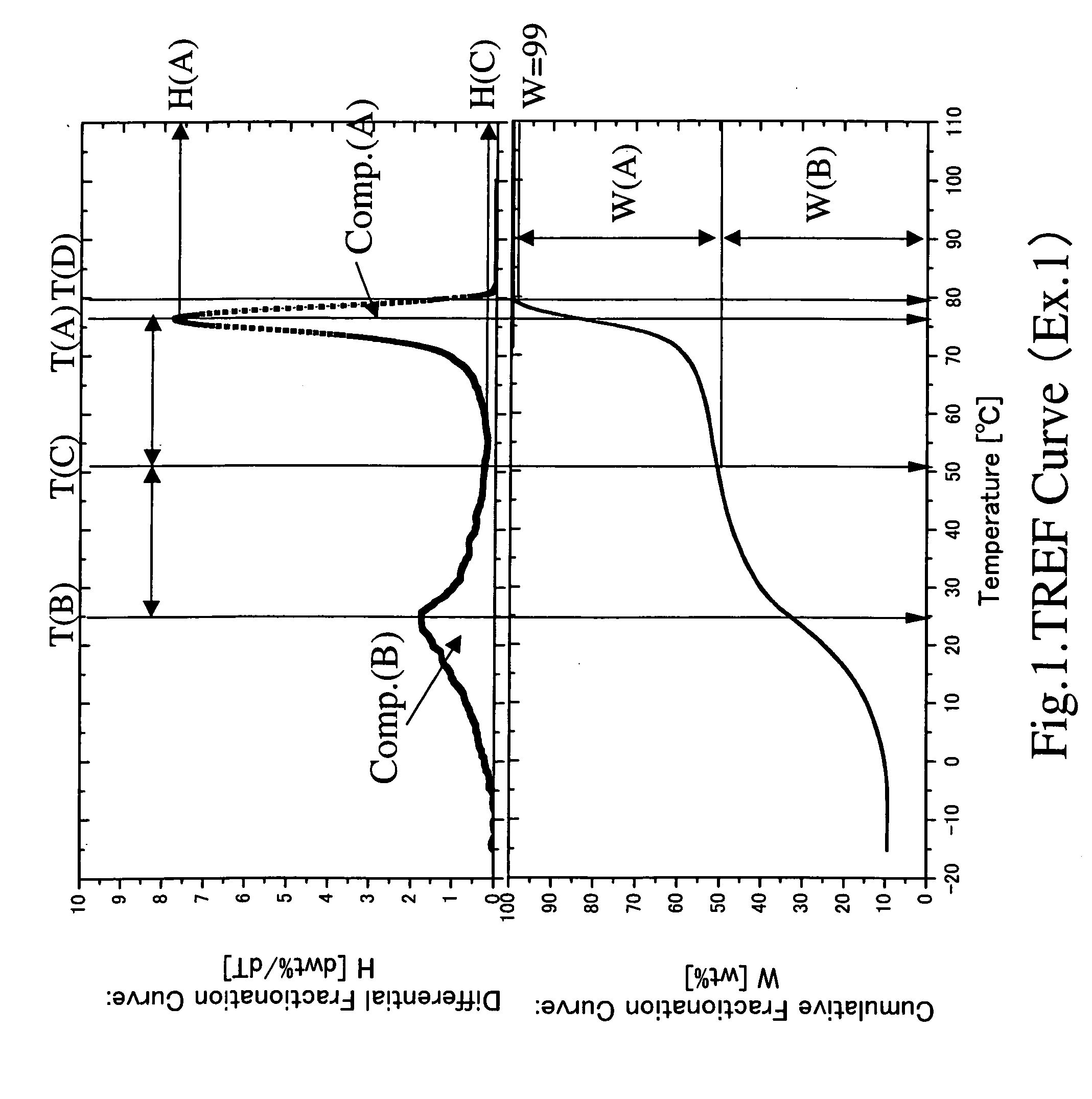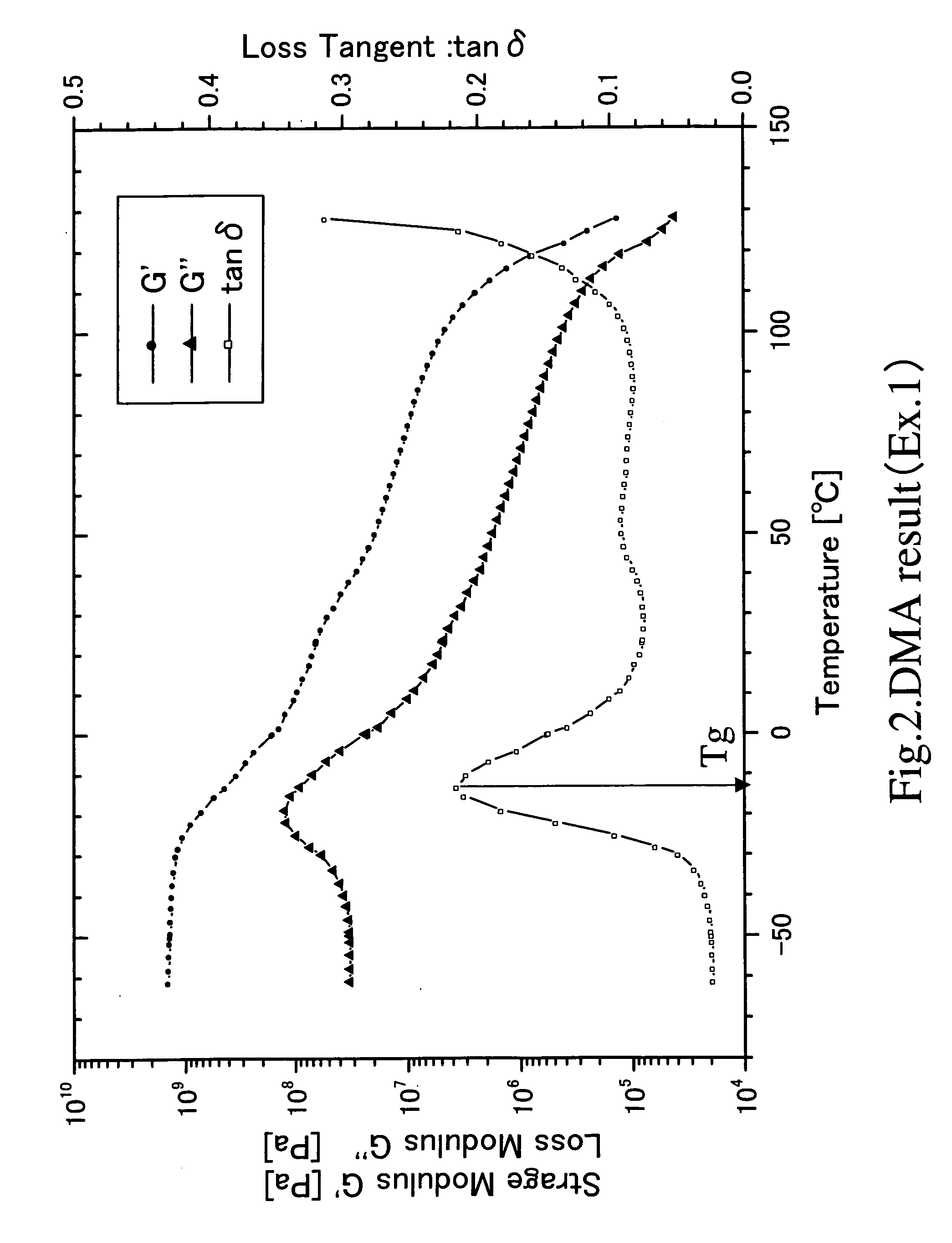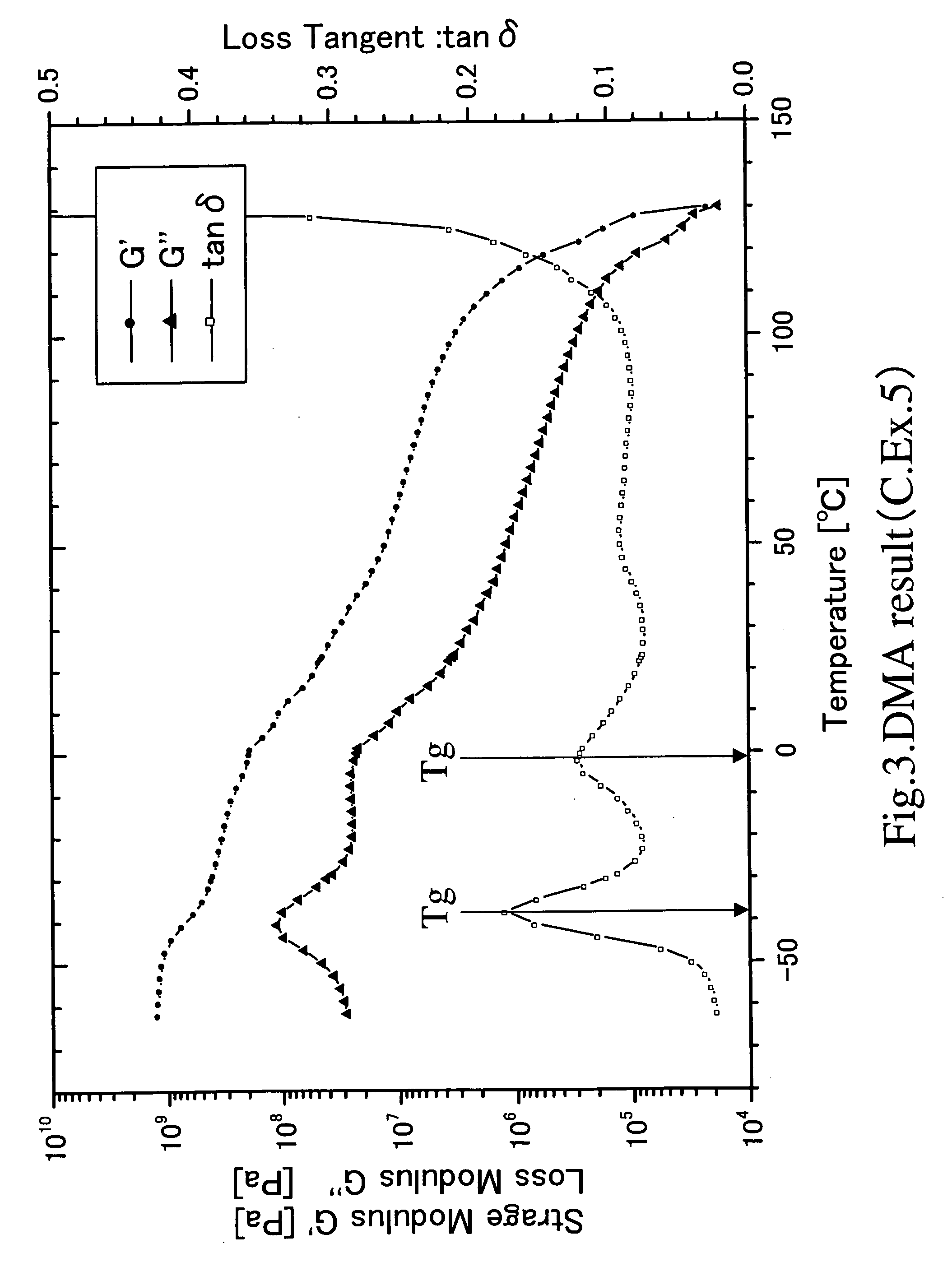Propylene-ethylene random block copolymer and biaxially oriented multi-layer film using the same as a surface layer
a technology of polyethylene and random block, applied in the direction of packaging foodstuffs, packaged goods, applications, etc., can solve the problems of insufficient flexibility, a large amount of low crystallinity and/or low molecular weight components, and poor transparency of polymers, etc., to suppress bleedout, improve transparency and flexibility, and reduce the effect of bleedou
- Summary
- Abstract
- Description
- Claims
- Application Information
AI Technical Summary
Benefits of technology
Problems solved by technology
Method used
Image
Examples
production example 1
[0370] Preparation of Prepolymerized Catalyst
[0371] (Chemical Treatment of Silicate)
[0372] 3.75 liters of distilled water and then 2.5 kg of concentrated sulfuric acid (96%) were slowly added to a glass-made separable flask of 10 liters equipped with a stirrer. 1 kg of montmorillonite (Benclay S L manufactured by Mizusawa Industrial Chemicals, Ltd.: average particle size=25 μm, particle size distribution=10-60 μm) was dispersed therein at 50° C., and the resultant slurry was heated to 90° C. and was maintained at that temperature for 6.5 hours. After cooling to 50° C., the slurry was filtrated under a reduced pressure to recover a cake. The cake was dispersed with 7 Liters of distilled water, followed by filtration. This washing procedure was repeated until a pH value of a washing liquid (filtrate) exceeded 3.5. The cake thus recovered was dried at 110° C. in nitrogen atmosphere for overnight. After drying, 707 g of silicate was obtained.
[0374] The abo...
production example 2
First Step
[0386] At the first step, propylene-ethylene random copolymerization was carried out in the liquid pool reactor of 0.4 m3 equipped with a stirrer. Liquid propylene, liquid ethylene and triisobutyl aluminun were continuously supplied to the reactor at the feed rate of 90 kg / hr, 3.0 kg / hr and 21.2 g / hr respectively. Hydrogen concentration at the gas phase of the reactor was controlled at 600 volppm by the continuous feed of hydrogen.
[0387] And a controlled amount of the same prepolymerized catalyst as used in PRODUCT EXAMPLE 1 was continuously supplied to the reactor at the feed rate of 7.1 g / hr as bare catalyst (pre-polymer is excluded). The reactor was cooled to hold the reaction temperature at 65° C.
[0388] The product propylene-ethylene random copolymer in the first step showed following features: BD (bulk density) 0.47 g / cc, MFR 16.3 g / 10 min, ethylene content 2.2 wt %.
Second Step
[0389] In the second step, propylene-ethylene random copolymerization was carried out...
production examples 3 to 9
[0393] A range of propylene-ethylene random block copolymers were prepared just as illustrated in PRODUCTION EXAMPLE 1. The ploymerization conditions and results are summarized in TABLE 3.
PUM
| Property | Measurement | Unit |
|---|---|---|
| Temperature | aaaaa | aaaaa |
| Temperature | aaaaa | aaaaa |
| Temperature | aaaaa | aaaaa |
Abstract
Description
Claims
Application Information
 Login to View More
Login to View More - R&D
- Intellectual Property
- Life Sciences
- Materials
- Tech Scout
- Unparalleled Data Quality
- Higher Quality Content
- 60% Fewer Hallucinations
Browse by: Latest US Patents, China's latest patents, Technical Efficacy Thesaurus, Application Domain, Technology Topic, Popular Technical Reports.
© 2025 PatSnap. All rights reserved.Legal|Privacy policy|Modern Slavery Act Transparency Statement|Sitemap|About US| Contact US: help@patsnap.com



